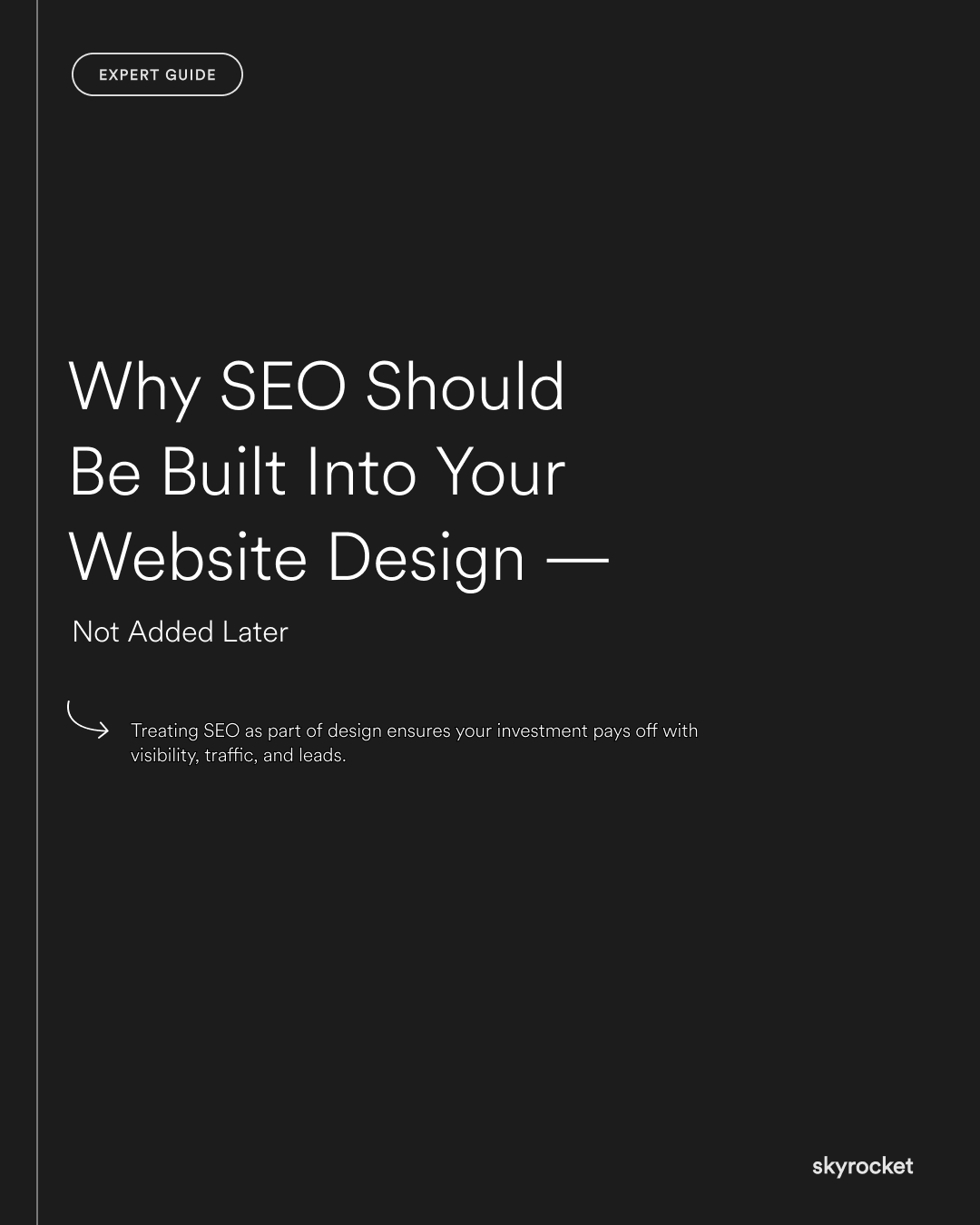Imagine spending months designing and building a beautiful new website. The launch goes smoothly, your team is proud, and customers say it looks great. But when you check your analytics, the numbers don’t budge. Traffic is flat. Leads aren’t growing. You’ve built a great looking site that no one can find.
That’s what happens when SEO is treated as an afterthought. Too many businesses bolt it on after launch, patching things with keywords and plugins, instead of baking it into the design from the start. The result is wasted time, higher costs, and missed opportunities.
Why this matters for your business
Your website isn’t just a digital business card. It’s a growth channel. If customers can’t find you in search, you’re losing sales to competitors who thought about SEO earlier.
SEO is not just about rankings. It’s about:
- Making sure the right people find your business when they’re ready to buy.
- Building trust with content that answers questions before your sales team ever speaks to a lead.
- Ensuring your investment in design and development actually delivers returns.
Without SEO, your site may look polished but it will struggle to perform.
Key Tip: SEO is not a separate step from design. It should shape your site structure, page layouts, and even content decisions. If your website is built without SEO in mind, fixing it later is like renovating a house after the walls are already up.
What happens when SEO is added too late
1. You rebuild instead of refine
If the wrong pages are prioritised or structured poorly, you’ll end up paying to redesign or restructure sections of your site.
2. You waste content investment
Content written without SEO guidance often misses what people are actually searching for. That means blogs, landing pages, or even product descriptions sit unseen.
3. You pay more for less return
Bolting on SEO later means extra development hours, patching plugins, and ongoing fixes. The ROI of your site is delayed or diminished.
What it looks like when SEO is built in
1. A logical site structure
From the start, your site map is based on what customers actually search for. This means your most valuable pages are easy for both users and Google to find.
2. Pages designed with search intent
Each page answers a specific customer question or need. Instead of just looking good, the design leads visitors naturally toward action.
3. Faster, cleaner code
SEO-friendly sites load quickly, work smoothly on mobile, and don’t rely on clunky plugins that slow things down.
4. Content that works harder
Every piece of copy is guided by what people are actually searching for, so your blogs, guides, and product pages pull in qualified traffic.
A real-world example
Consider a NZ service business that launched a new site focused on aesthetics. Six months in, leads were stagnant. When they finally did an SEO audit, they discovered their main service pages weren’t indexed properly, and blog topics had little to do with what their customers searched for. They had to rebuild core parts of the site at extra cost. If SEO had been considered upfront, they would have been getting leads from day one.
Common misconceptions
“Can’t we just add keywords later?”
You can, but if the site structure doesn’t support them, you’re fighting uphill. It’s like trying to squeeze new rooms into a finished house.
“SEO is just about content, not design.”
Wrong. Design decisions like navigation, page speed, and mobile layouts all directly affect SEO.
“We’ll focus on SEO once the site is live.”
By then, you’ve already lost valuable time and momentum. Competitors who started earlier are already ahead.
What to do now
- Review your site plan before you design: does it reflect what customers search for?
- Involve SEO in your content planning, not just after the fact.
- Test site speed and mobile usability early, not at the end.
- Map your sales process against your site journey. Are visitors finding the right paths?
- If your site is already live, get an SEO audit before investing more in content or campaigns.
Your website should attract, not just impress. Treating SEO as part of design ensures your investment pays off with visibility, traffic, and leads. If you’d like an expert opinion on how to integrate SEO into your site, we’re always here to help.



